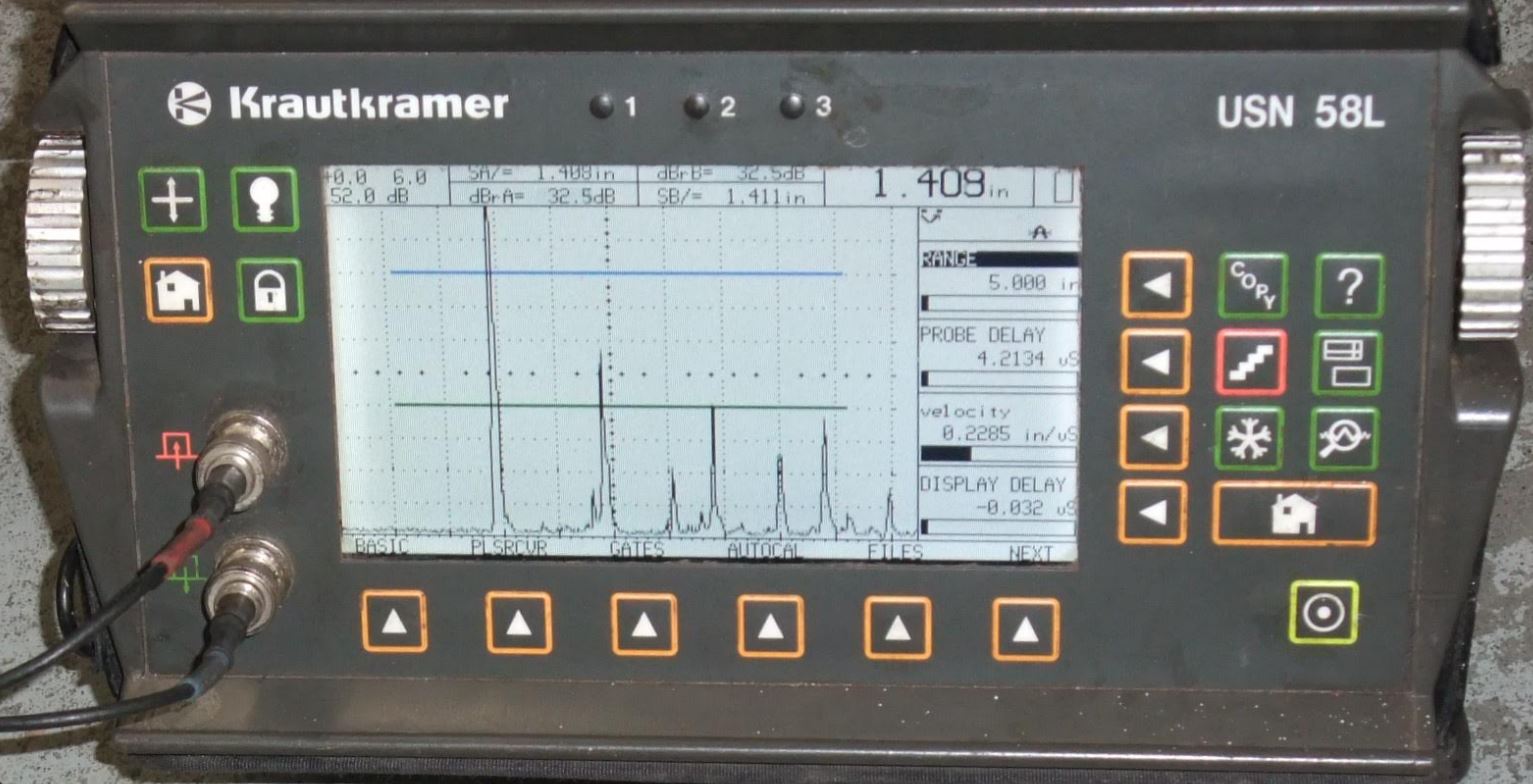Conventional Ultrasonic Testing
Conventional Ultrasonic Testing is use single-element transducers or dual element transducers one as transmitter and one as receiver or same one as transmitter and receiver of sound waves travel at a specific velocity depends on the material under examination. In conventional ultrasonic examination inspection parameters are fixed and each inspection configuration has a fixed focal point and fixed incidence angle. Because of the focal point and incidence angle are fixed, it can be difficult to optimize conventional UT to detect expected flaws oriented at unfavourable position to the angle of sound travel in the material under examination. To generate a different beam angle, different transducers’ wedges or shoes are required.
The result displayed on the Ultrasonic instrument in form of A-Scan which required experienced technician to interpretate the signal for acceptance and rejection.
Custom Pipe Services Inc. Ultrasonic Technicians are qualified to CAN/CGSB 48.9712 and SNT-TC-1A certification schemes as Level 2 and Level 3 with decades of experience in ultrasonic examination of Material, Thickness measurement, Weld, Weld Overlay, Cladding, Corrosion Detection etc.

Conventional Ultrasonic Testing is mostly used for the following:
- Thickness Measurement
- Weld Examination
- Lamination Detection
- Corrosion/Erosion wall thickness gauging
- Corrosion Monitoring
- Bond Integrity Assessment
- Nozzle Weld Inspection
Custom Pipe Services Inc. has huge inventory of reference reflector inventory as per ASME, API, ASTM and CSA standards for material, weldments and weld overlay inspection.
